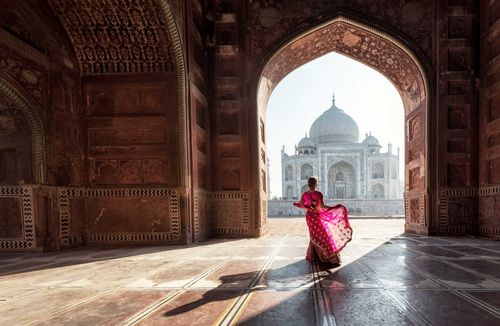Cricketing heroes such as one-day and test captains (respectively) M.S. Dhoni and Virat Kohli live under the constant scrutiny of the media and public; expectations are high and disappointments acute. India versus Pakistan matches are especially emotive, with rivalries often spilling out into bloodshed. Besides spectator cricket, you’ll see games being played on open spaces all around the country.
Test matches are rare, but inter-state cricket is easy to catch – the most prestigious competition is the Ranji Trophy. Occasionally, in cities like Kolkata, you may even come across a match blocking a road, and will have to be patient as the players begrudgingly let your vehicle continue.
Football (soccer) has undergone a revolution since the establishment of the eight-team Indian Super League (ISL) in 2013, which attracts the fourth highest average attendances in the world as well as a massive TV audience. Teams employ high-profile coaches such as FC Goa’s Brazilian legend Zico and Pune City’s English ex-pro David Platt, while the players include a number of internationals, mostly from Africa. Goa and Kolkata have always been strongholds of the game, and Atlético de Kolkata won the inaugural trophy in 2014; but Chennaiyin FC surprised everyone by lifting it in 2015.
Horse racing can be a good day out, especially if you enjoy a flutter. The racecourse at Kolkata is the most popular, often attracting crowds of more than fifty thousand, especially on New Year’s Day. There are several other racecourses around the country, mostly in larger cities such as Mumbai, Delhi, Pune, Hyderabad, Mysuru, Bengaluru and Ooty. Other (mainly) spectator sports include polo, originally from upper Kashmir, but taken up by the British to become one of the symbols of the Raj. Certain Rajasthani princes, such as the late Hanut Singh of Jodhpur, were considered to be the best polo players in the world between the 1930s and 1950s, but since the 1960s, when the privy purses were abolished, they have been unable to maintain their stables, and the tradition of polo has declined. Today, it’s mainly the army who plays the game; the best place to catch a match is at the Delhi Gymkhana during the winter season. Polo, in more or less its original form, is still played on tiny mountain ponies in Ladakh; a good place to see a game played in traditional style is in Leh during the Ladakh Festival in early September.
After years in the doldrums, field hockey, which used to regularly furnish the country with Olympic medals, is making a strong comeback. The haul of medals dried up in the 1960s when international hockey introduced Astroturf – which was, and still is, a rare surface in India. However, hockey remains very popular, especially in schools and colleges and, interestingly, among the tribal girls of Odisha, who supply the Indian national team with a regular clutch of players. Having hosted the Hockey World Cup in 2010, India is due to stage the competition again in 2018.
Tennis in India has always been a sport for the middle and upper classes. The country has produced a number of world-class players, such as the men’s duo of Mahesh Bhupati and Leander Paes, who briefly achieved a world number-one ranking in the men’s doubles in 1999, but the brightest current star is undoubtedly Sania Mirza, the first Indian women to break into the singles top 50. After injury forced her to give up the solo game she shifted her attention to doubles and was ranked at number-one at the time of writing, having partnered Martina Hingis to three successive Grand Slam titles in 2015–16.
Volleyball is very popular throughout India, especially in the resorts of Goa. Standards aren’t particularly high and joining a game is quite easy. Since the arrival on the Formula 1 scene of Kingfisher tycoon Vijay Malia’s Force India team, motor racing has also grown in popularity and three Grand Prix races were hosted at the new track at Noida outside Delhi between 2011 and 2013, though tax disputes have led to the race being shelved since. Golf is widely followed, too, again among the middle classes; the second oldest golf course in the world is in Kolkata, and one of the highest in the world is at Shimla.
One indigenous sport you’re likely to see in north India is kabaddi, played on a small (badminton-sized) court, and informally on any suitable open area. The game, with seven players in each team, consists of a player from each team alternately attempting to “tag” as many members of the opposing team as possible in the space of a single breath (cheating is impossible; the player has to maintain a continuous chant of “kabaddikabaddikabaddikabaddi” etc), and getting back to his/her own side of the court without being caught. The game can get quite rough, with slaps and kicks in tagging allowed, and the defending team must try to tackle and pin the attacker so as not to allow him or her to even touch the dividing line. Tagged victims are required to leave the court. Although still an amateur sport, kabaddi is taken very seriously with state and national championships, and has featured in the Asian Games since 1990.
Popular with devotees of the monkey god, Hanuman, Indian wrestling, or kushti, has a small but dedicated following. Wrestlers are known as pahalwaans or “strong men” and can be seen exercising early in the morning with clubs and weights along river ghats such as those in Varanasi or Kolkata.
India’s Twenty20 vision
Over the last ten years, the whole global cricket scene has been massively shaken up by the brashness and glamour of the Indian Premier League, the world’s biggest Twenty20 cricket tournament. Held annually in April and May since 2008, the IPL features a mix of young up-and-coming locals, established Indian players and international cricketing megastars such as AB de Villiers and Chris Gayle. Each of the league’s eight city team franchises supplements their home-grown playing staff by signing up star “icon players”, whose services are auctioned off via a series of sealed bids – records were broken in 2015 when Delhi Daredevils picked up master-blasting batsman Yuvraj Singh for a cool US$2.4 million.
With such staggering sums of money changing hands, it’s perhaps no surprise that the IPL has become as well known for its off-field controversies and financial irregularities as for the action and drama on the pitch. In 2013, three Rajasthan Royals players were arrested for spot-fixing and in 2015 both the Royals and Chennai Super Kings were booted out of the league for two years following revelations of match-fixing.














